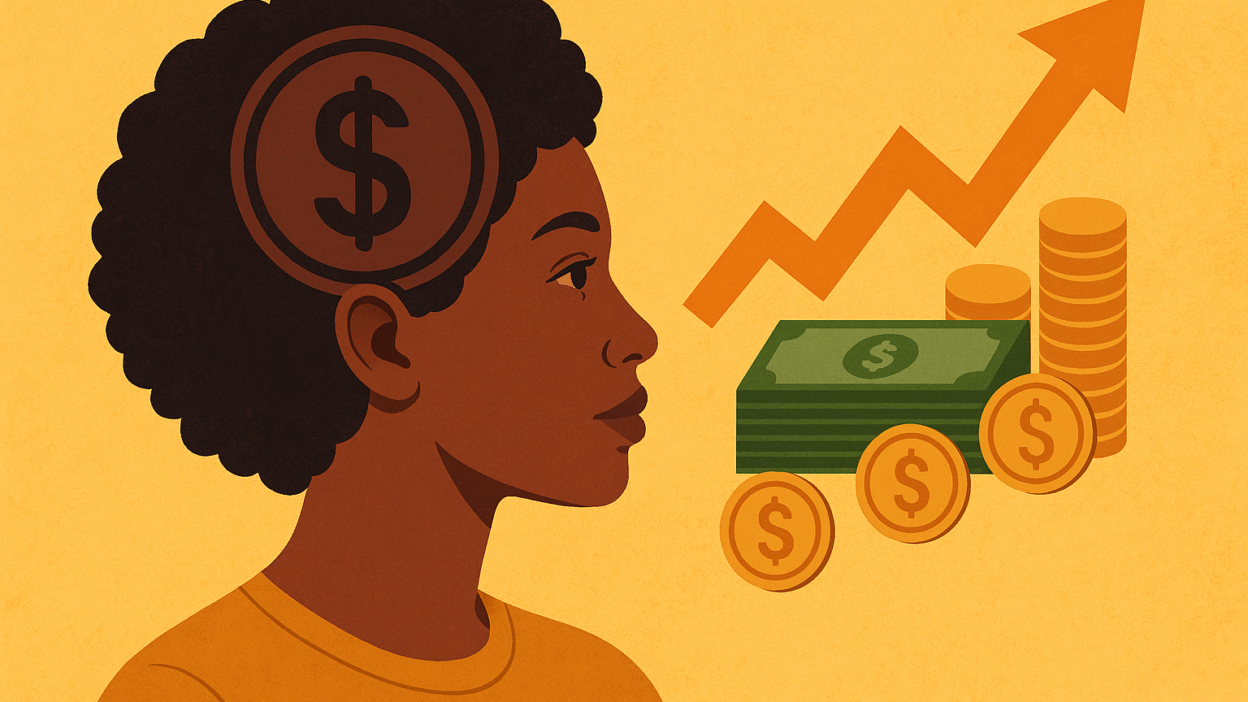Are your thoughts about money helping you grow wealth—or quietly holding you back? One of the most overlooked aspects of financial success isn’t strategy—it’s mindset. According to a 2023 Fidelity report, over 60% of people who adopted a positive financial mindset were able to increase their savings within just six months. If you’re just starting your financial journey, this post will walk you through money mindset and motivation tips for beginners so you can build strong habits and achieve long-term financial well-being.
Financial Toolkit / Essentials
Let’s start with the basic tools you’ll need to support a better money mindset:
- Budgeting Apps: Mint (great for beginners) or YNAB (You Need a Budget) for hands-on control.
- Daily Mindset Tools: Gratitude journaling apps like Presently, or printed financial affirmations.
- Educational Resources: Try reading The Psychology of Money or listening to podcasts like Afford Anything.
- Vision Board Tools: Use Canva to build a visual money goal board.
- Accountability Buddy: Partner with a friend or join an online community for motivation.
If digital tools aren’t your thing, printable trackers and goal sheets from YourFinanceWorld.com are beginner-friendly and customizable.
Time Commitment / Planning Horizon
You don’t need hours to reset your financial mindset. Here’s a quick breakdown:
- Daily (5–10 minutes): Say your affirmations, review your goals, and log any money wins.
- Weekly (30 minutes): Review your budget and spending habits.
- Monthly (60 minutes): Analyze your progress, reset goals, and adjust your strategy.
These micro-habits compound into life-changing shifts when practiced consistently over time.
Step-by-Step Instructions
Step 1: Define Your “Why”
Start with your financial goals. Whether it’s buying a car, getting out of debt, or saving for travel—write down your top 3 reasons for building wealth. Keep them visible.
Step 2: Identify Your Money Beliefs
Ask yourself:
- What did I learn about money growing up?
- Do I associate money with stress or freedom? Write down any limiting beliefs like “I’m not good with money” and challenge them.
Step 3: Build a Morning Mindset Routine
Spend 5 minutes:
- Repeating money affirmations like “I am in control of my financial future.”
- Visualizing a debt-free or financially stable life.
- Journaling one positive money action from the day before.
Step 4: Track Small Wins
Each time you stick to your budget, resist an impulse buy, or pay off $10 toward debt—celebrate it. These actions reinforce your positive money identity.
Step 5: Learn Something New Weekly
Subscribe to finance blogs or YouTube channels. YourFinanceWorld.com offers a weekly “Mindset Monday” series curated just for beginners.
Key Financial Metrics
Understanding basic financial data helps reinforce your mindset with measurable results:
- Savings Rate: Try starting at 10%, then increasing gradually.
- Debt-to-Income Ratio: Keep it under 36% to maintain financial health.
- Net Worth: Even tracking small growth builds motivation.
- Emergency Fund: Aim for 3 months of expenses to begin.
According to Bankrate, people with emergency funds are 50% less likely to experience financial anxiety.
Smarter Alternatives
- Can’t save big yet? Start with round-up savings apps like Acorns.
- Not ready for investing? Use simulation platforms like Public or Investopedia’s simulator to practice.
- Journaling too much? Use a voice memo app to log thoughts while on the go.
Each of these tips can be personalized to your current income, lifestyle, and time availability.
Application Scenarios
- Young Professional: Set up auto-deposits to a high-yield savings account and track discretionary spending using categories.
- College Student: Use a simple envelope budgeting system and create a vision board for graduation goals.
- Stay-at-Home Parent: Focus on household budget efficiency and create weekly financial check-ins with your partner.
Tailor these strategies to your life stage for maximum effect.
Common Mistakes to Avoid
- Trying to do everything at once: Start with 1–2 mindset shifts.
- Focusing only on debt: Balance repayment with long-term goals.
- Comparing yourself online: Everyone’s journey is unique.
- Expecting quick results: Financial change is gradual.
Learn from missteps, but don’t let them derail your progress.
Maintenance & Optimization Tips
- Set Monthly Reminders: Schedule 30-minute reviews.
- Use Financial Dashboards: Track goals, habits, and savings in one place.
- Reward Yourself: Use milestones to celebrate (in a budget-friendly way).
- Update Goals Seasonally: As life changes, so should your financial targets.
Consistency is key. Build routines that fit into your lifestyle.
Conclusion
Improving your financial mindset doesn’t require a financial degree—just daily intention. These money mindset and motivation tips for beginners are simple but powerful tools to shift how you view and manage money. Remember, your mindset shapes your habits, and your habits shape your future. Ready to take control of your finances? Subscribe to YourFinanceWorld.com and grab our free printable “Money Mindset Starter Pack.”
FAQs
What is a financial mindset?
It’s your beliefs, attitudes, and habits around money. A positive mindset leads to better financial decisions.
How long until I see results?
Mindset shifts can occur in weeks, but financial improvements often take months. Stick with it.
Are affirmations really effective?
Yes. They rewire negative thoughts and help build confidence in money matters.
What if I have no savings?
Start small. Even saving $1 per day builds a habit.
Can these tips work if I’m in debt?
Absolutely. They help you stay motivated during debt repayment.
Where can I learn more?
Visit YourFinanceWorld.com for beginner-friendly content, downloads, and community resources.




